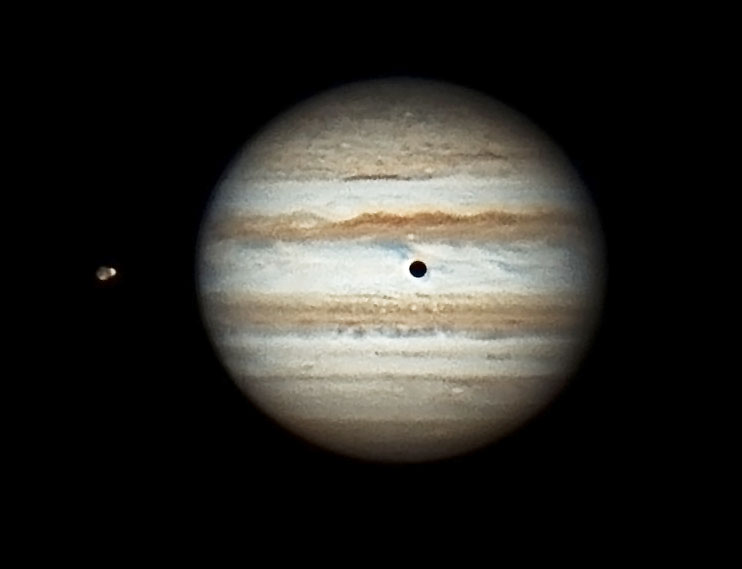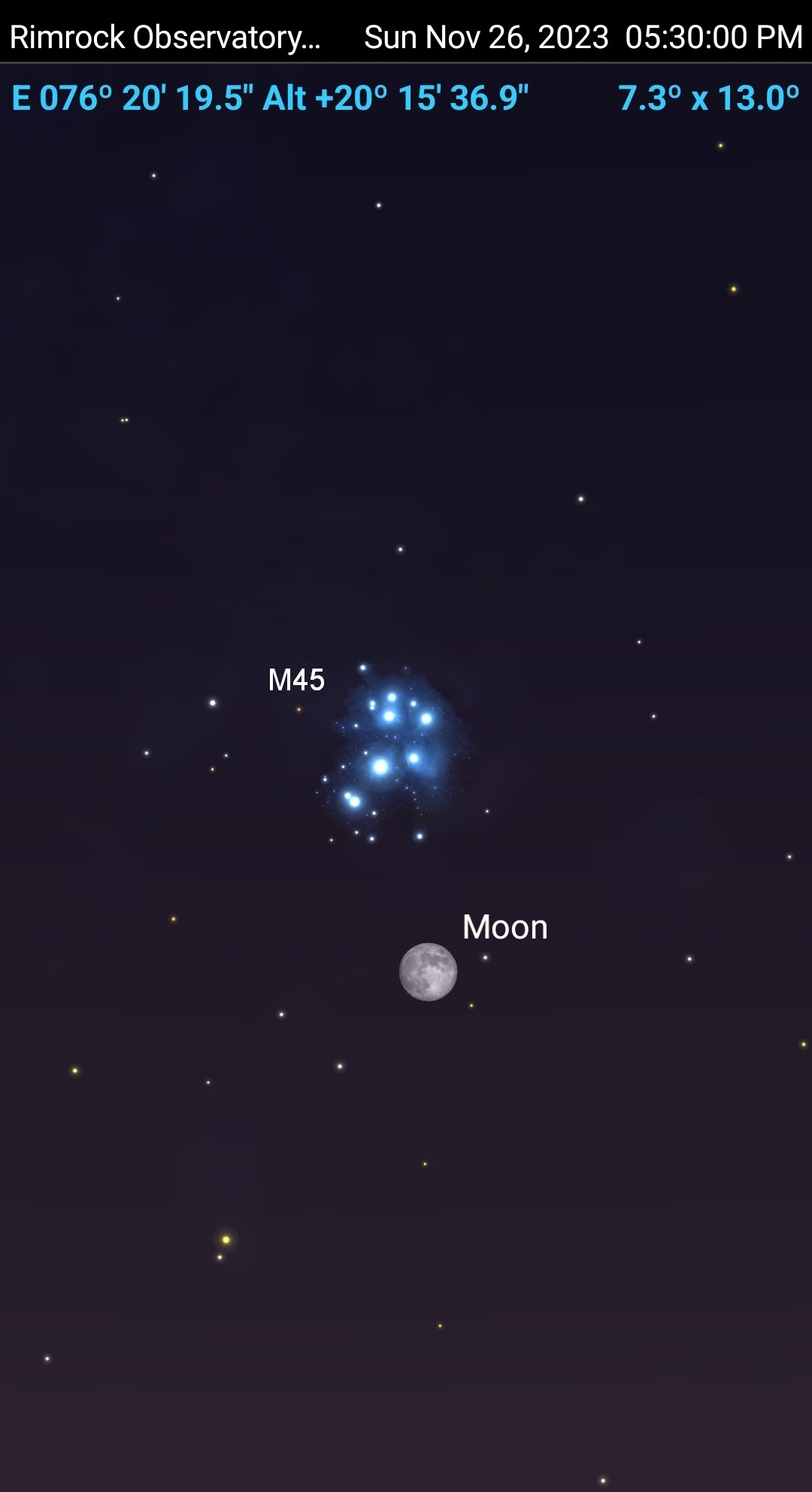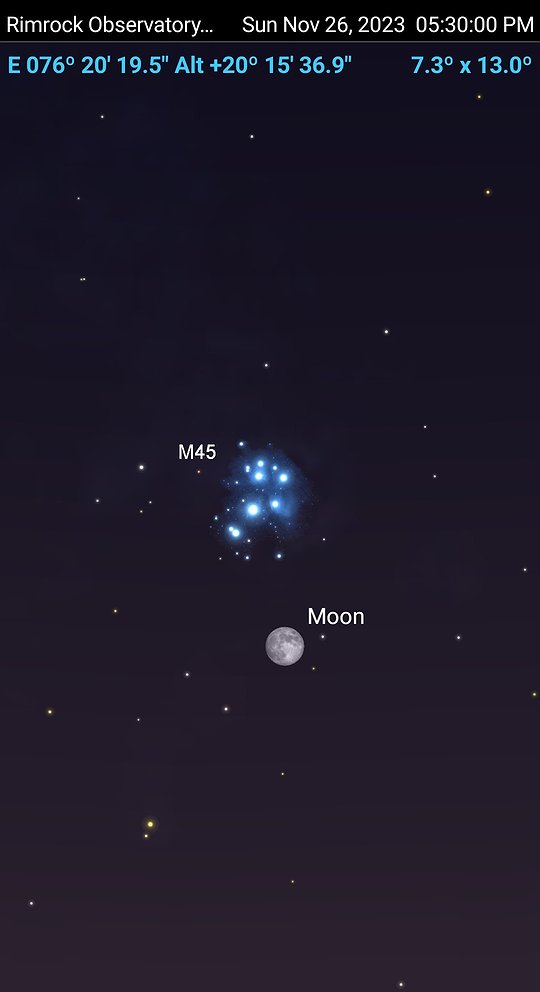Best night sky events for November 2023
JOHN TAYLOR/Guest Contributor | Coeur d'Alene Press | UPDATED 2 years, 1 month AGO
Nov. 3 — Jupiter at Opposition
The giant planet Jupiter will be at its closest approach to Earth. It will be brighter than any other time of the year and will be visible all night long. This is the best time to view and photograph Jupiter and its moons. A medium-sized telescope should be able to show you some of the details in Jupiter's cloud bands. A good pair of binoculars should allow you to see Jupiter's four largest moons, appearing as bright dots on either side of the planet.
 Photo courtesy of John Taylor
Photo courtesy of John TaylorNov. 4, 5 — Taurids Meteor Shower
The Taurids is a minor meteor shower and at its peak only gives us about 5-10 meteors per hour. It is unusual in that it consists of two separate streams. The meteors are produced by dust grains left behind by Asteroid 2004 TG10 and Comet 2P Encke. The third quarter moon may block most of the dim meteors but it doesn’t rise until 11:00 p.m. Meteors will radiate from the constellation Taurus, but can appear anywhere in the sky.
Nov. 5 — Daylight Saving Time Ends
Remember to “fall back” to Standard Time on Sunday morning, November 5, 2023, at 2 a.m. This turns us back from Pacific Daylight Time (PDT) to Pacific Standard Time (PST). And now the sun is going to set ridiculously early, but for us astronomers it means earlier long nights so we can go to bed earlier.
Nov. 9 — Moon and Venus Conjunction
These two solar system bodies bring us a stunning, don’t-miss conjunction. Standing a comfortable 24° above the horizon at 5 AM, the crescent moon and Venus, the night’s most brilliant bodies, visually meet up. This was ordered up for you early-risers.
Nov. 13 — New moon
The moon will be located on the same side of the Earth as the sun and will not be visible in the night sky. This phase occurs at 09:28 UTC. This is the best time of the month to observe faint objects such as galaxies and star clusters because there is no moonlight to interfere.
Nov. 13 — Uranus at Opposition
The blue-green planet will be at its closest approach to Earth and its face will be fully illuminated by the Sun. It will be brighter than any other time of the year and will be visible all night long. This is the best time to view Uranus. Due to its great distance, it will appear as a tiny blue-green (turquoise) disk visible through even a modest telescope.
Nov. 17, 18 — Leonid Meteor Shower
The Leonids is an average meteor shower, producing up to 15 meteors per hour at its peak. The Leonids is produced by dust grains left behind by comet Tempel-Tuttle. The shower occurs annually from November 6-30. It peaks this year on the night of the 17th into the 18th. The crescent moon will set before midnight making for dark skies for what should be a great early morning show. Best viewing will be from a dark location after midnight. Meteors will radiate from the constellation Leo, but can appear anywhere in the sky. Be advised that the constellation Leo does not rise until just around midnight, but it does not need to be above the horizon to see the meteors.
Nov. 24 and 25 — Jupiter
This is another great chance to catch a view of Jupiter. Just look up! Jupiter will be the brightest “star” right next to the moon.
Nov. 26 — Moon near the Pleiades in the early evening
After having visited Jupiter the night before, the bright waxing gibbous moon will be very near the Pleiades star cluster. The Pleiades is also known as the Seven Sisters or Messier 45 (M45) and appears as a small but discernable cluster of stars in the constellation of Taurus the Bull. The pair will appear relatively close starting just after sunset. The moon will pass about 2 degrees – or 4 full moon widths – from the Pleiades. It’ll be a great photo op for you budding astrophotographers. Set up your smartphone on a tripod use a bit of zoom and try a series of exposures using ¼, ½, and 1 second exposures. See which ones you like best. Good luck. Factoid – this cluster is referred to as Subaru in Japanese. Yes, just like the car.
 Photo courtesy of SkySafari 6
Photo courtesy of SkySafari 6Nov. 27 — Full moon
The moon will be located on the opposite side of the Earth from the sun and its face will be fully illuminated. This full moon was known by early Native American tribes as the Beaver Moon because this was the time of year to set the beaver traps before the swamps and rivers froze. It has also been known as the Frosty Moon and the Dark Moon.



